

0


0

TRAVEL
By rathinasankari
23 July, 2019

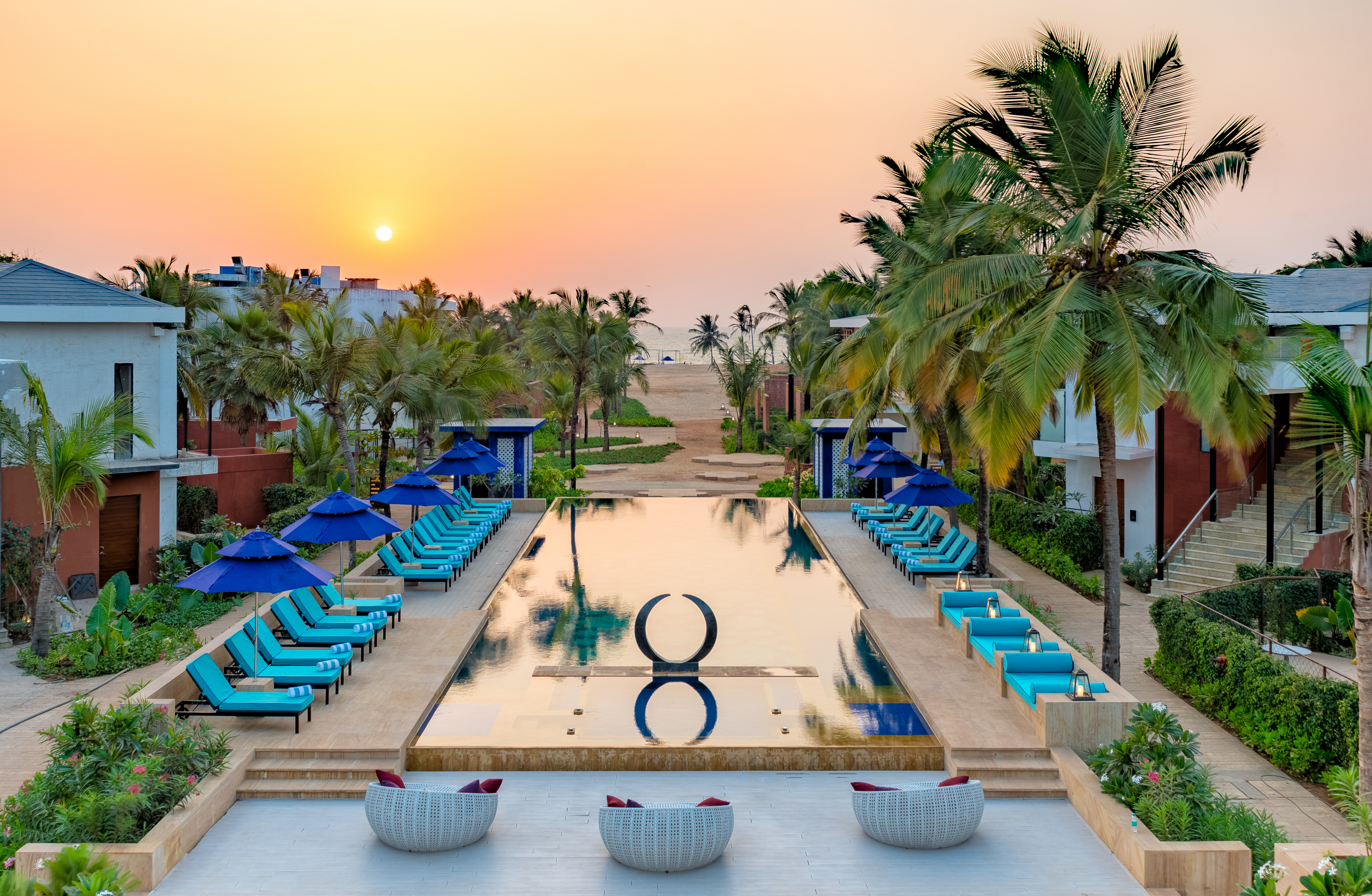 Azaya Beach Resort
At Goa - the capital of the Portuguese Estado da India, the New World products brought by the Portuguese assimilated with the local ingredients to produce dishes that are today revered throughout the world. In the 15th century, the Portuguese set sails to find a direct sea route to India. They wanted to capture the lucrative spice trade as by then the cost of black pepper had skyrocketed and was termed black gold. When the Portuguese landed in the Malabar Coast of Southern India they brought with them many products from the New World which were unknown and unheard of in India.
Azaya Beach Resort
At Goa - the capital of the Portuguese Estado da India, the New World products brought by the Portuguese assimilated with the local ingredients to produce dishes that are today revered throughout the world. In the 15th century, the Portuguese set sails to find a direct sea route to India. They wanted to capture the lucrative spice trade as by then the cost of black pepper had skyrocketed and was termed black gold. When the Portuguese landed in the Malabar Coast of Southern India they brought with them many products from the New World which were unknown and unheard of in India.
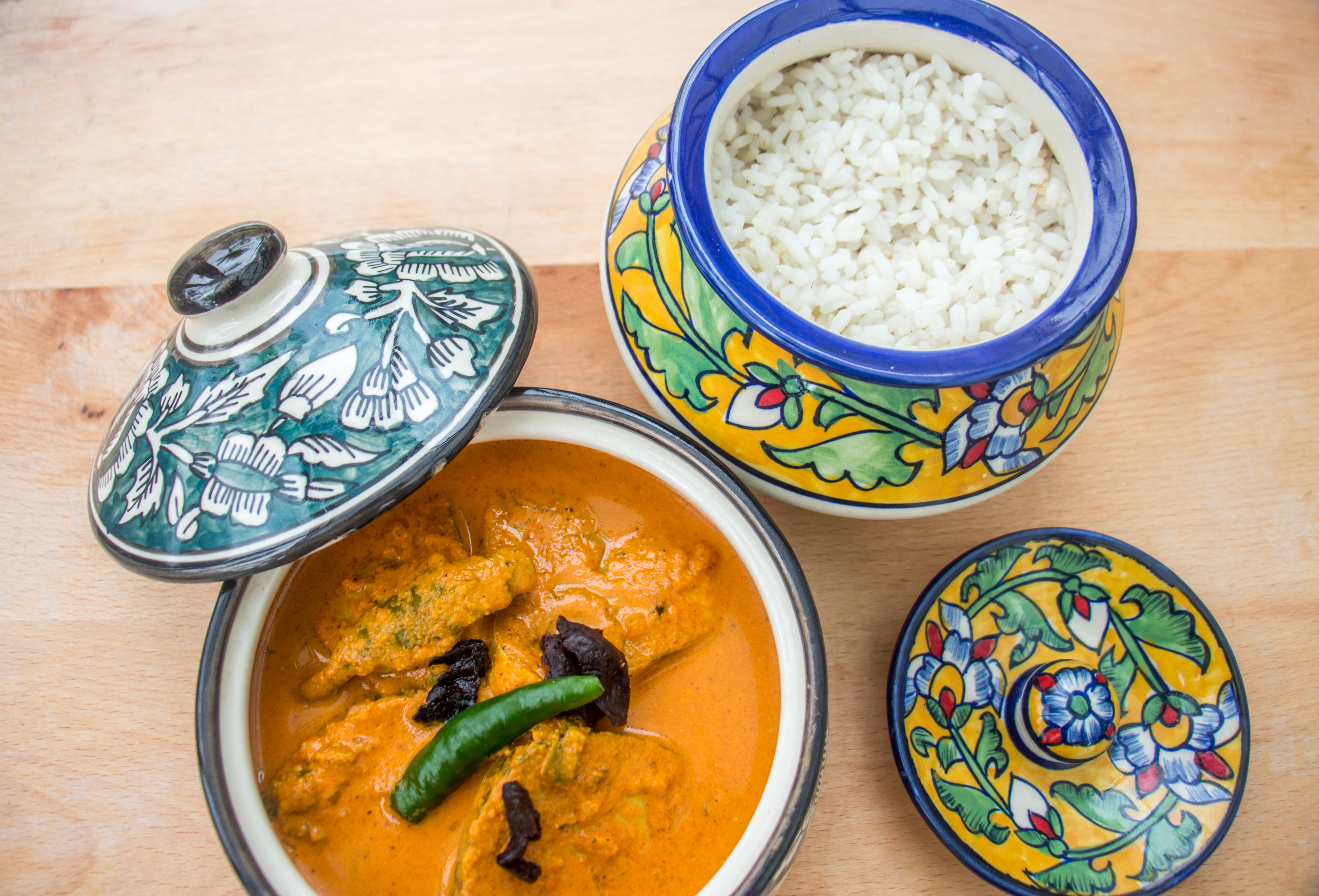 A traditional Goan fish curry
I was keen to understand the Goan spice trail with Portuguese influences hence headed to the Sahakari Spice plantation in Ponda, Goa. Green bunches of pepper that is so generously used to dress and preserve meat hung to its creepers. The wonder spice cinnamon which is sprinkled in your breakfast porridge, hot chocolate and added to biryani, pulao, and curries is peeled from the bark of the trees. Marco Polo is told to have noted the growth of cinnamon in the erstwhile, Pandya kingdom whose capital was Madurai during his travel to India. Tamil Sangam Literature has references to the dried flower head or clove, a meat spice as early as in the third and sixth centuries. It is told in the early colonial times that cloves and cinnamon were the few ingredients used for making burnt wine. The aromatic spice cardamom or elaichi which finds mention in the Manasollasa written in the 12th century and is used to flavour kheer and other sweets is the third costliest spice in the world.
A traditional Goan fish curry
I was keen to understand the Goan spice trail with Portuguese influences hence headed to the Sahakari Spice plantation in Ponda, Goa. Green bunches of pepper that is so generously used to dress and preserve meat hung to its creepers. The wonder spice cinnamon which is sprinkled in your breakfast porridge, hot chocolate and added to biryani, pulao, and curries is peeled from the bark of the trees. Marco Polo is told to have noted the growth of cinnamon in the erstwhile, Pandya kingdom whose capital was Madurai during his travel to India. Tamil Sangam Literature has references to the dried flower head or clove, a meat spice as early as in the third and sixth centuries. It is told in the early colonial times that cloves and cinnamon were the few ingredients used for making burnt wine. The aromatic spice cardamom or elaichi which finds mention in the Manasollasa written in the 12th century and is used to flavour kheer and other sweets is the third costliest spice in the world.
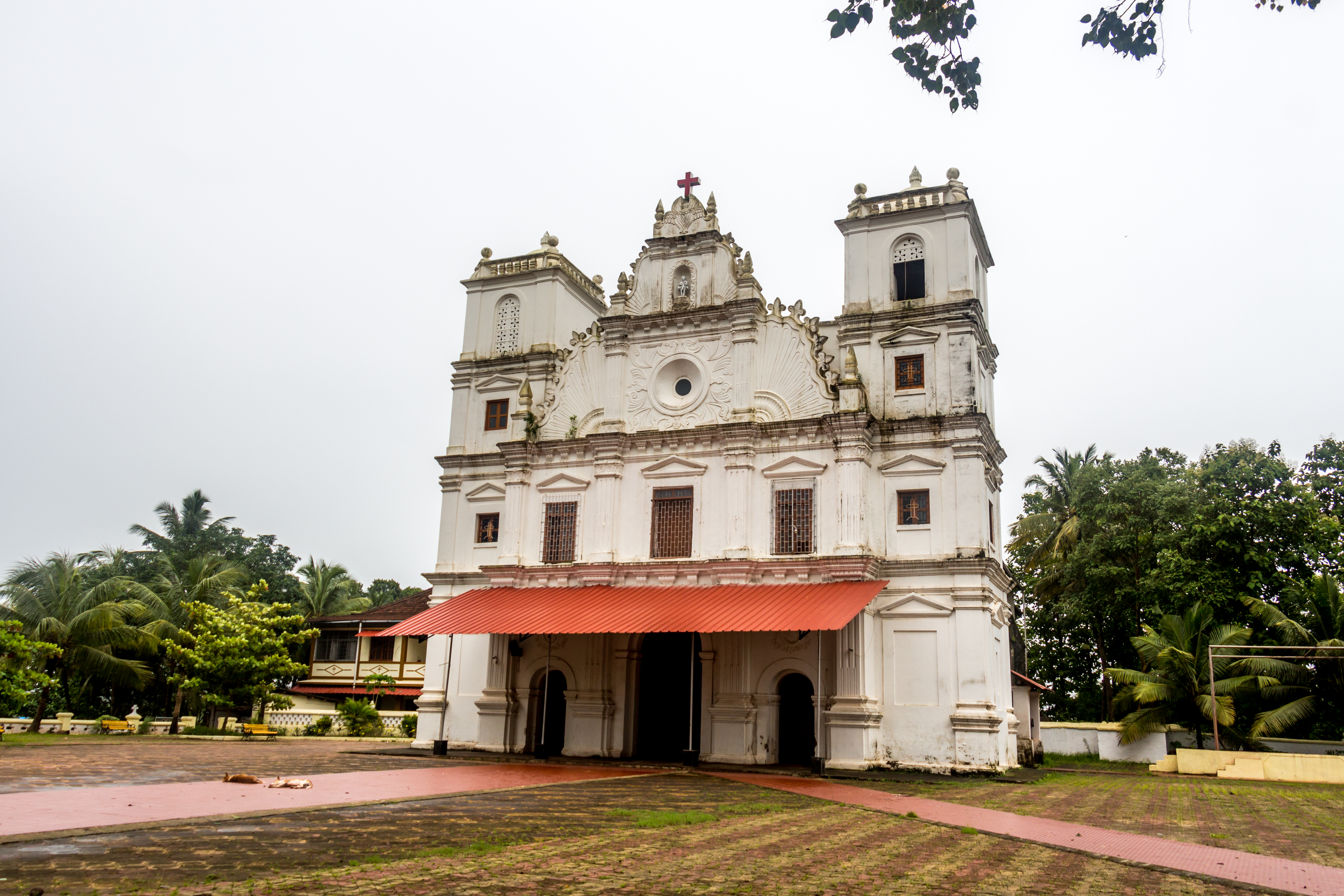 A little Goan church
In his book, “ A historical dictionary of Indian Food”, the late K. T. Achaya says, The Carriera da India was established for the regular export of spices to Portugal, and one shipment alone consisted of 1500 tonnes of pepper, 28 tonnes of ginger, 8 tonnes of cinnamon and 7 tonnes of cloves, the value of which must have been astronomical in Europe.
After getting a rundown of the large variety of spices cultivated in India which was the primary reason that brought the Europeans to India, I was curious to understand the marriage of Indian spices with the goods brought by the Portuguese to India. While I knew that the Portuguese were the first to introduce baked goods in India like the poi, pao, katro pav, and kakon, I wanted to understand their influence in rest of Goa’s culinary space.
A little Goan church
In his book, “ A historical dictionary of Indian Food”, the late K. T. Achaya says, The Carriera da India was established for the regular export of spices to Portugal, and one shipment alone consisted of 1500 tonnes of pepper, 28 tonnes of ginger, 8 tonnes of cinnamon and 7 tonnes of cloves, the value of which must have been astronomical in Europe.
After getting a rundown of the large variety of spices cultivated in India which was the primary reason that brought the Europeans to India, I was curious to understand the marriage of Indian spices with the goods brought by the Portuguese to India. While I knew that the Portuguese were the first to introduce baked goods in India like the poi, pao, katro pav, and kakon, I wanted to understand their influence in rest of Goa’s culinary space.
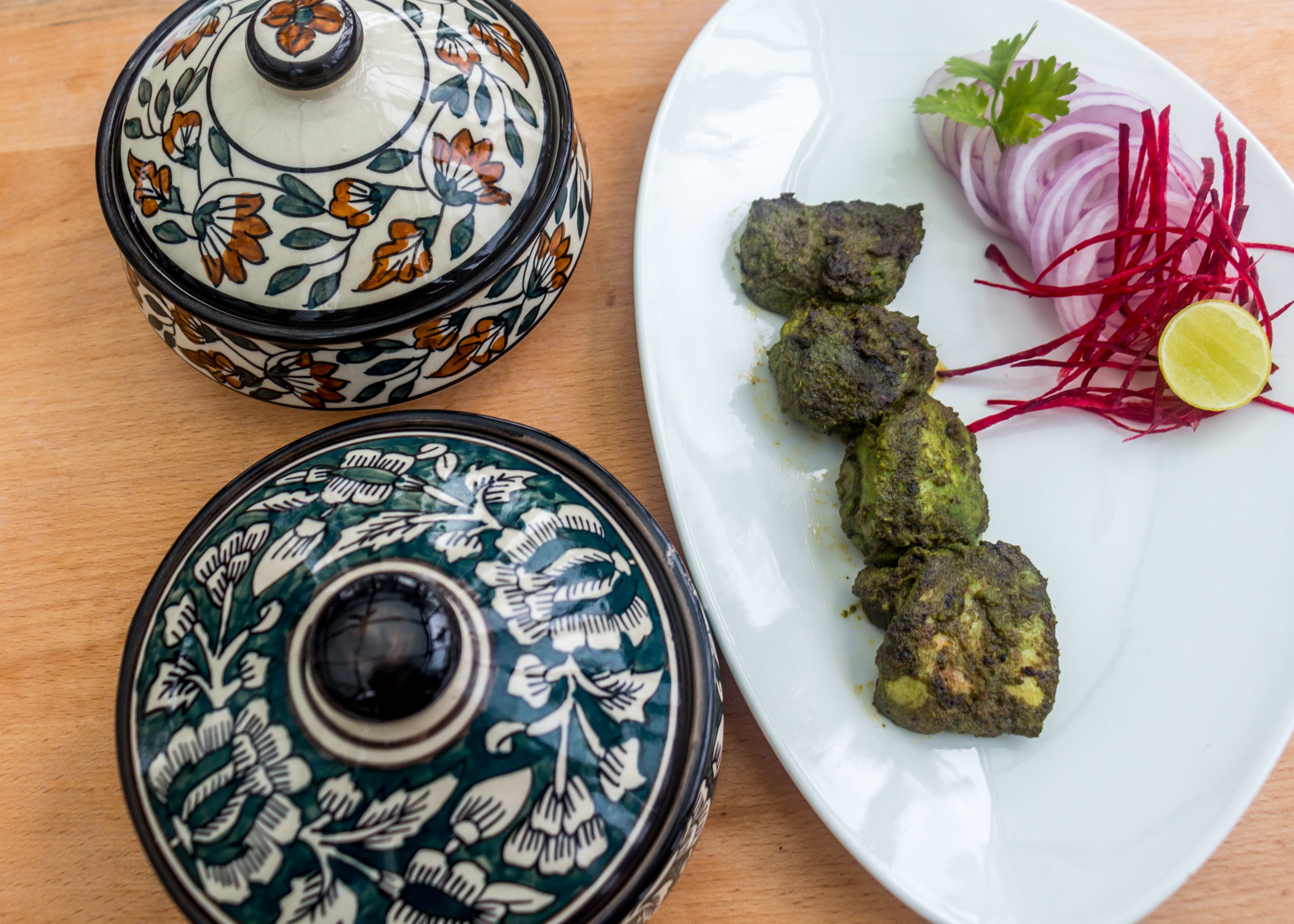 Chicken Cafreal
My guide at the plantation tells me cashew or caju as the Portuguese and Indians call this Brazilian fruit is said to have been introduced in Goa to avoid soil erosion. Today, this major cash crop is used to prepare the locally distilled strong drink called feni which obtained the Geographical Indication status to the state in 2009. Surprisingly the chili which today is an important ingredient of the Indian cuisine was unheard of till the Portuguese arrived in India. Until then pepper lent the much-required pungency to Indian dishes. The chili traveled from the New World to India after the voyages of Columbus and Vasco da Gama. Today about 18 different varieties of chilies are cultivated in India. Vegetables and fruits like potato, tomato, pineapple, chikoo, guava, groundnuts, tapioca, and corn crossed the oceans from the New World and entered India. Olive oil, olives, cod fish, wine, vinegar, and cheese traveled from Portugal to India. Over the years these ingredients are liberally used by Goans and the confluence of Arab, Portuguese, Brazilian and African cultures has resulted in the Goan Christian cuisine.
Chicken Cafreal
My guide at the plantation tells me cashew or caju as the Portuguese and Indians call this Brazilian fruit is said to have been introduced in Goa to avoid soil erosion. Today, this major cash crop is used to prepare the locally distilled strong drink called feni which obtained the Geographical Indication status to the state in 2009. Surprisingly the chili which today is an important ingredient of the Indian cuisine was unheard of till the Portuguese arrived in India. Until then pepper lent the much-required pungency to Indian dishes. The chili traveled from the New World to India after the voyages of Columbus and Vasco da Gama. Today about 18 different varieties of chilies are cultivated in India. Vegetables and fruits like potato, tomato, pineapple, chikoo, guava, groundnuts, tapioca, and corn crossed the oceans from the New World and entered India. Olive oil, olives, cod fish, wine, vinegar, and cheese traveled from Portugal to India. Over the years these ingredients are liberally used by Goans and the confluence of Arab, Portuguese, Brazilian and African cultures has resulted in the Goan Christian cuisine.
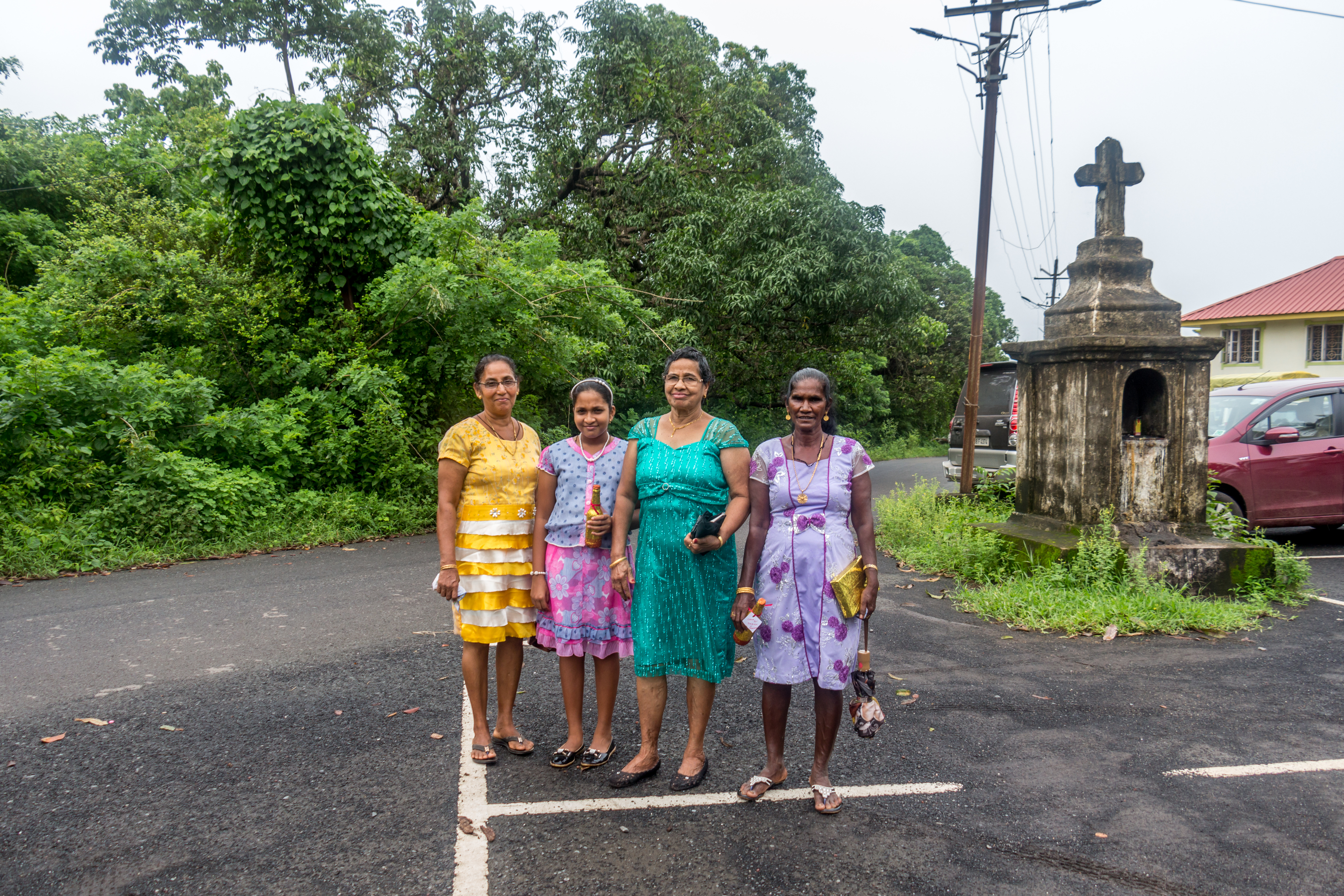 Goan ladies in their Sunday gown on their way to the church
Goan ladies in their Sunday gown on their way to the church
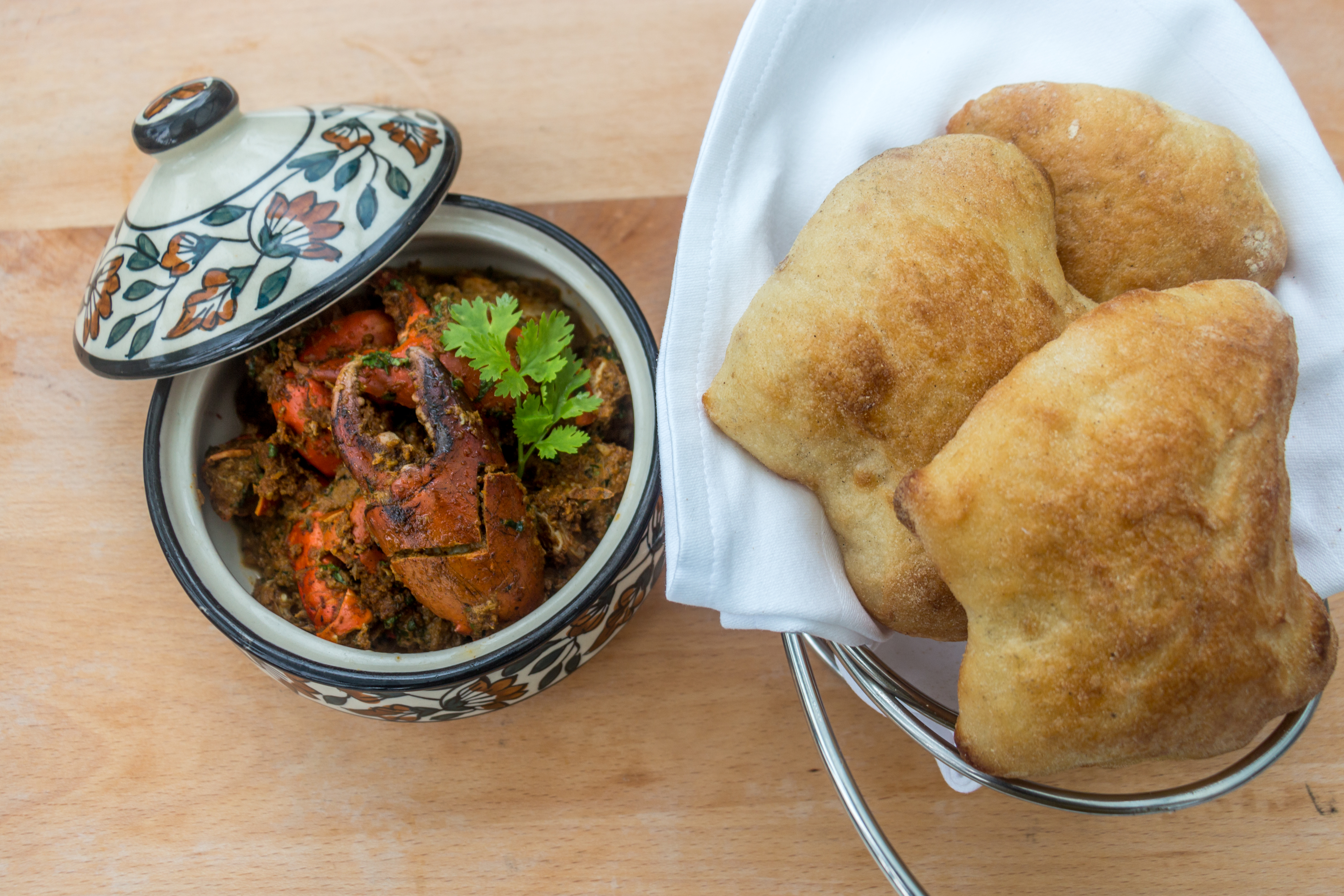 The crab xec xec
That night I enjoyed a lavish dinner of Goan delicacies at Azaya Beach Resort whipped by chef Swatantra Gautam. The fiery Goan fish curry with locally grown kokum and a generous helping of coconut milk was prepared with a dash of Portuguese influence - vinegar and chilies. It was the perfect accompaniment for the locally grown red rice. The green curry - chicken cafreal which probably came with the African soldiers who came with the Portuguese was moped with the poi. The striking red crab xec xec prepared with Goan chili, black gold or pepper along with other ingredients was a little tedious to eat but nevertheless lip-smacking. I was full and didn’t have the appetite for the highly tempting and iconic Goan dishes balchao and carne de vinha d'alhos which was introduced by the Portuguese and underwent a transformation in Goa. I finished my heavy dinner with a portion of the famed multi-layered dessert - bebinca that would not have been possible if the Portuguese hadn’t introduced baking in India. I looked at my table. Without having left my country I had got to experience a fusion where East meets West and the medley is a perfect symphony of flavours.
The crab xec xec
That night I enjoyed a lavish dinner of Goan delicacies at Azaya Beach Resort whipped by chef Swatantra Gautam. The fiery Goan fish curry with locally grown kokum and a generous helping of coconut milk was prepared with a dash of Portuguese influence - vinegar and chilies. It was the perfect accompaniment for the locally grown red rice. The green curry - chicken cafreal which probably came with the African soldiers who came with the Portuguese was moped with the poi. The striking red crab xec xec prepared with Goan chili, black gold or pepper along with other ingredients was a little tedious to eat but nevertheless lip-smacking. I was full and didn’t have the appetite for the highly tempting and iconic Goan dishes balchao and carne de vinha d'alhos which was introduced by the Portuguese and underwent a transformation in Goa. I finished my heavy dinner with a portion of the famed multi-layered dessert - bebinca that would not have been possible if the Portuguese hadn’t introduced baking in India. I looked at my table. Without having left my country I had got to experience a fusion where East meets West and the medley is a perfect symphony of flavours.
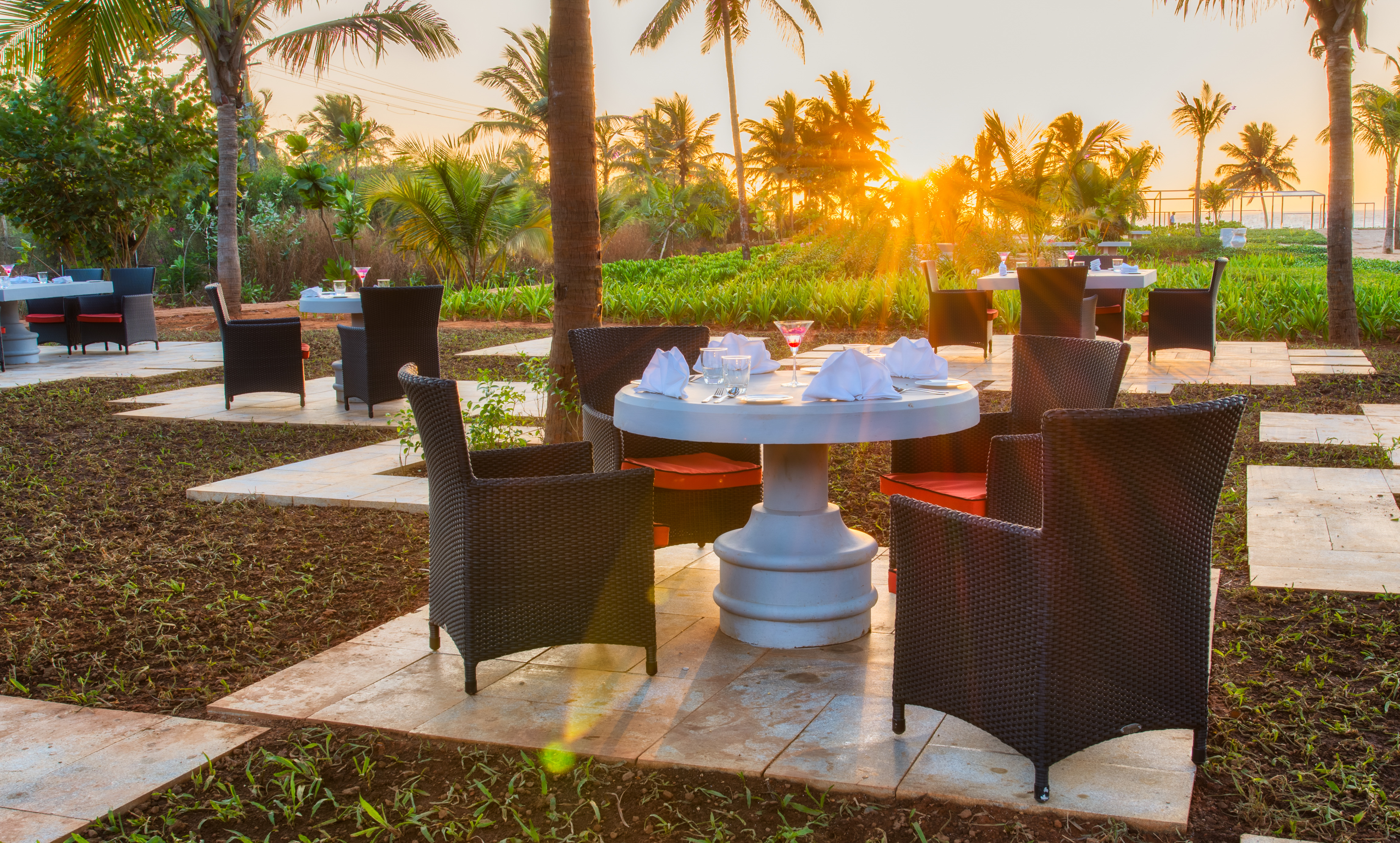 La Concha restaurant at Azaya Beach Resort
Goa not just satiates you with its landscape, it introduces you to a culture, unlike others. The thought of a laidback lifestyle, fresh seafood, and some delicious dishes have got me thinking. I am already planning my next trip to Goa.
To know more such Indian places, follow us on Facebook, Instagram, and Twitter. Download our magazine Spunky Indian for exclusive stories.
La Concha restaurant at Azaya Beach Resort
Goa not just satiates you with its landscape, it introduces you to a culture, unlike others. The thought of a laidback lifestyle, fresh seafood, and some delicious dishes have got me thinking. I am already planning my next trip to Goa.
To know more such Indian places, follow us on Facebook, Instagram, and Twitter. Download our magazine Spunky Indian for exclusive stories.